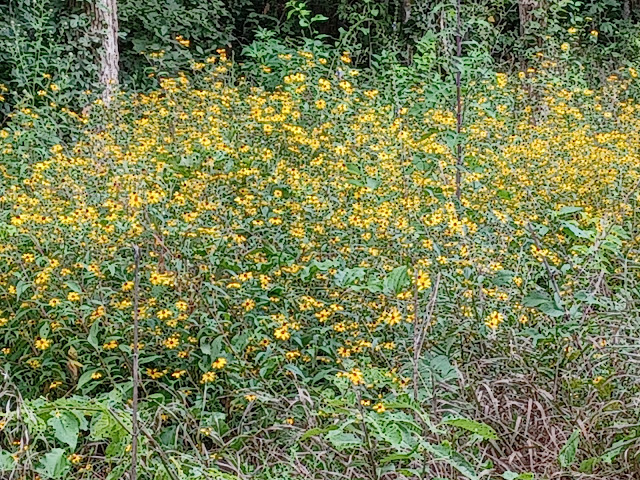 |
Beneath the snow, the garden is green.
This dianthus remained green all winter. |
Spring whispers to the trees,
“I am coming.”
Buds swell a tiny bit. Sap rises slowly.
Spring whispers to the roots, and bulbs, and rhizomes,
“I am coming.”
Tiny roots begin to dig through the soil, searching.
Spring whispers to the seeds lying in the soil,
“I am coming.”
Something stirs within… a tiny plant preparing.
Spring whispers to the birds,
“I am coming.”
One bird begins to sing… then another… and another…
Spring whispers throughout the land,
“I am coming.”
Winter loosens its grip…
Geese call in formation, headed to summer homes…
A fresh wind blows…
Daffodil shoots test the air…
River ice cracks…
The thaw begins…
The ewe’s belly swells,
Her milk flows.
Spring whispers, “I am coming.
I am here.”
The ancient Celtic holiday begins today and ends sundown tomorrow -- Imbolc, Oimelg,
Candlemas, or (not so ancient or Celtic) Groundhog Day.
Ancient holidays always focused on the seasons. They were
less about worshiping or honoring deities than about tuning into the cycles of
Nature, hearing the rhythms of the Land. They celebrated the ebbs and flows of
agriculture and food gathering. In some traditions, this is the true First Day
of Spring.
The daylight hours are noticeably longer. River ice might
start to thaw. I often hear the call of geese overhead as they fly toward
summer homes.
My goal for this coming year is to become even more attune to
the cycles of the seasons. They do seem to be changing, so it will require a
heightened awareness. And I want to develop a more intimate relationship with
the land I live on, not to just learn where the hills and dales are, but to get
to know the trees and stones and other beings that live here… to attune
energetically with the land that supports me. We can all do this to at least
begin to develop a better connection with Nature around us and within us. For
we are Nature, too. We’ve just become disconnected from that fact, and thus,
disconnected from who we really are, our essential selves.
So I’ve developed a little meditation to help me connect
with Nature and the Land on which I live. You can play along, even if you live
in a big city. The “concrete jungle” is supported by land, and Nature lives
there, too.
Meditation to Honor the Land
Find a place in Nature, with something growing. It can be an
open field, a woods, a single tree, a patch of grass, or even a potted plant in
the mall.
Look at it closely. Notice colors, shades, shapes, shadows,
textures, if there are smells, or sounds. If you feel comfortable doing so,
touch the soil, or a plant, embrace the tree, or sit with your back to the
tree (ask the tree/plant for permission first). Feel the texture and temperature. Does moss grow on the tree or the soil?
Are there pebbles in the soil? And so on. Pay close attention to physical
details. No judgement, just attention.
Now breathe, slowly, deeply as you remain aware of Nature around you. Breathe slowly, deeply, become aware of Nature within you. Breathe with the tree, the grass,
the soil, the potted plant. Breathe with the Land, slowly deeply. Breathe…
Now, assume that the tree, the grass, the land, etc. has a heartbeat
of some sort, a rhythm it keeps. Sync your heartbeat with that heartbeat. Sink
deeply into your heartbeat and that of Nature around you, within you.
And breathe… slowly… deeply.
Breathe...
Inhale slowly, deeply...
Exhale, slowly, deeply...
Again...
Do this until you feel satisfied.











































